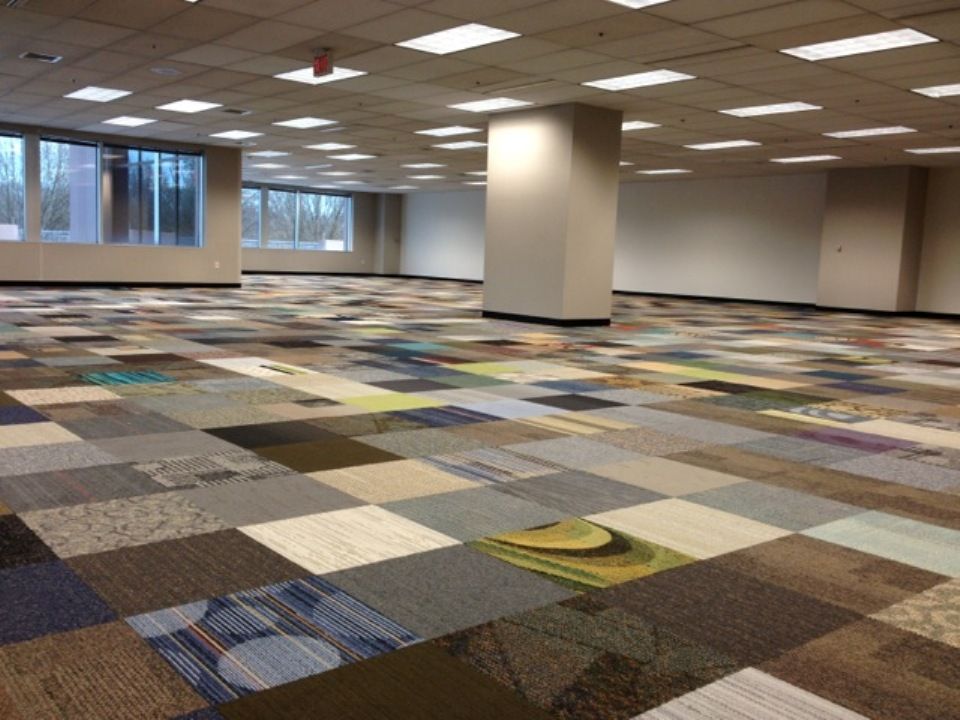Carpeting is a popular and comfortable flooring option. It adds warmth, coziness, and aesthetic appeal to any room. However, when it comes to choose a carpet for high-traffic areas, such as hallways, entryways, and living rooms, durability and resilience become prime factor. These areas endure constant foot traffic, spills, and wear, making it important to choose a carpet that is durable and last long. In this blog, we will explore the key factors to consider when selecting the perfect carpet for high-traffic areas in your home.
Fiber Type and Material
The type of fiber and material used in the carpet significantly impacts its durability and performance. There are various options to choose from, each with its own strengths and weaknesses. Nylon carpets are known for their exceptional durability and resilience, making them ideal for high-traffic areas. They are stain-resistant and can maintain their appearance even with heavy use. Polyester carpets offer excellent softness and are resistant to fading, making them suitable for areas with exposure to sunlight. Olefin carpets are budget-friendly and resistant to moisture, but they may not be as durable as nylon or polyester.
Pile Height and Density
The pile height and density of the carpet are crucial considerations for high-traffic areas. Low pile carpets, such as Berber or commercial-grade carpets, are more resistant to flattening and wear compared to high-pile or shaggy carpets. Additionally, carpets with higher density tend to be more durable, as they can better withstand the pressure of foot traffic and furniture. When shopping for a carpet, run your hand over it to feel the thickness and density. Avoid carpets that feel thin or sparse, as they may wear out quickly in high-traffic zones.
Stain Resistance and Easy Maintenance
High-traffic areas are prone to spills and accidents, making stain resistance and easy maintenance essential qualities in a carpet. Look for carpets with stain-resistant treatments or built-in technology that repels spills and stains. These treatments create a protective barrier, making it easier to clean up spills before they can set in and cause permanent discoloration. Additionally, consider choosing a carpet with a neutral or multi-colored pattern, as it can help camouflage any potential stains that may occur over time.
Color and Pattern
Selecting the right color and pattern for a high-traffic area can be a game-changer. Light-colored carpets may brighten up a space, but they are more likely to show dirt and stains. On the other hand, dark-colored carpets can better conceal dirt, but they may show lint or pet hair more prominently. A middle-ground approach with medium-toned colors often strikes a good balance. Consider patterns that incorporate various colors or flecks, as they can effectively hide signs of wear and soiling.
Quality and Warranty
Investing in a high-quality carpet tile flooring is essential, especially for high-traffic areas. While the cost may be higher initially, a quality carpet can save you money in the long run, as it will last longer and require less frequent replacement. Be sure to inquire about the carpet’s warranty and what it covers, as a reliable warranty can provide peace of mind and protection against premature wear or manufacturing defects.
Padding and Installation
Don’t overlook the importance of carpet padding and proper installation. A quality carpet pad provides additional cushioning, support, and insulation, which can help extend the life of the carpet. Professional installation is also crucial for ensuring that the carpet is laid correctly and securely, preventing wrinkles, ripples, and premature wear.
Conclusion
Selecting the perfect carpet for high-traffic areas in your home requires careful consideration of various factors. From the type of fiber and material to the color, pattern, and quality, each aspect plays a role in determining the carpet’s durability and performance. By choosing a carpet that is specifically designed to withstand heavy use and spills, you can ensure that your high-traffic areas remain comfortable and visually appealing for years to come. Remember to consult with a flooring professional to find the best carpet option that suits your needs and lifestyle.
1. What makes a carpet suitable for high-traffic areas?
A carpet suitable for high-traffic areas should be durable, resilient, and able to withstand constant foot traffic without showing signs of wear quickly. Look for carpets made from durable fibers like nylon and with a low pile height and high density for enhanced durability.
2. Which fiber type is best for high-traffic areas?
Nylon is widely considered the best fiber for high-traffic areas due to its exceptional durability and resistance to wear and tear. It is also stain-resistant and easy to clean, making it an ideal choice for areas prone to spills and accidents.
3. Are there any stain-resistant carpets available for high-traffic areas?
Yes, many carpets come with stain-resistant treatments or built-in technologies that repel spills and stains. These treatments create a protective barrier, making it easier to clean up spills before they can set in and cause permanent discoloration.
4. Should I choose a light or dark-colored carpet for high-traffic areas?
Both light and dark-colored carpets have their pros and cons. Light-colored carpets can brighten up a space, but they are more likely to show dirt and stains. Dark-colored carpets can better conceal dirt, but they may show lint or pet hair more prominently. Consider medium-toned colors as a compromise.
5. How often should I replace the carpet in high-traffic areas?
The frequency of carpet replacement in high-traffic areas depends on the quality of the carpet, the level of foot traffic, and how well it’s maintained. High-quality carpets, properly cared for, can last for many years, while lower-quality carpets may need replacement more frequently.
6. Can I install the carpet myself, or should I hire a professional?
While it’s possible to install a carpet yourself, hiring a professional is recommended for proper installation. Professionals ensure the carpet is laid correctly, securely, and free of wrinkles or ripples, which can impact its performance and longevity.
7. How do I maintain a carpet in high-traffic areas?
Regular maintenance is essential to keep your carpet looking its best in high-traffic areas. Vacuum frequently to remove dirt and debris, address spills promptly to prevent stains, and consider professional cleaning every 12 to 18 months to deep clean and refresh the carpet.
8. Can I use area rugs over the carpet in high-traffic areas?
Yes, using area rugs can help protect the carpet in high-traffic areas by creating an additional layer of cushioning and support. Place area rugs strategically in areas with the most foot traffic to reduce wear on the carpet underneath.



